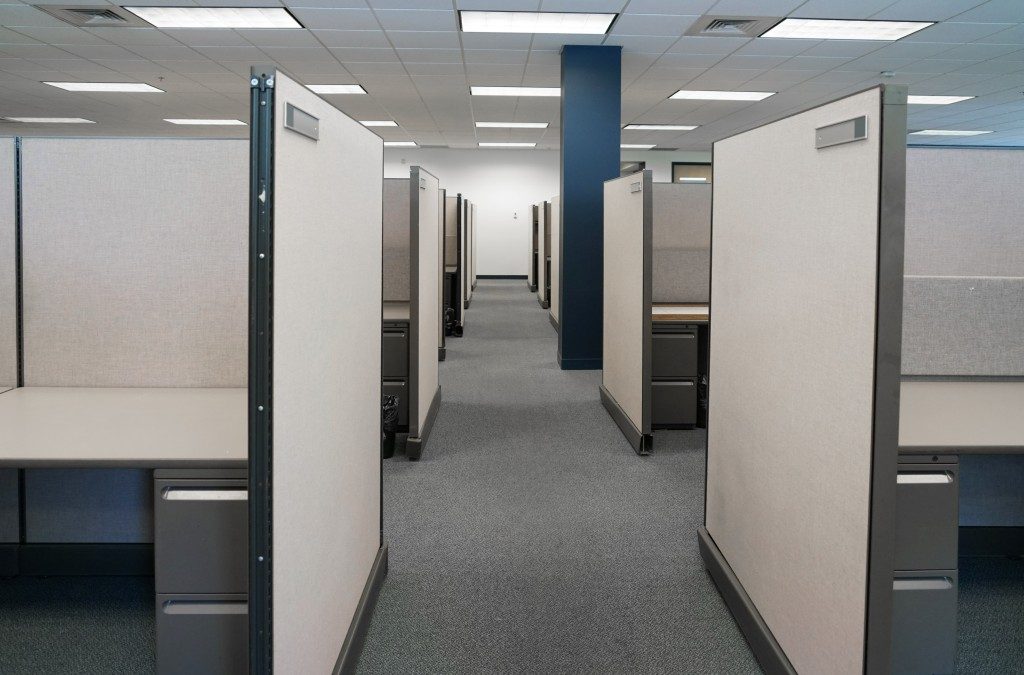Offices layouts must meet the balance between creating an effective and open use of space and providing ample privacy and comfort to the people who work there. New furniture options and technology now provide a way to meet the demands of both synergy and privacy within the office.
Especially in busy centres where office space is at a premium, creating an optimised layout that meets the needs of your business and its employees can be a challenge. Office planning must strike a balance between maximising space efficiency with maintaining an appropriate amount of comfort and privacy employees to function effectively.
Perhaps one of the most persistent contradictions between companies is the choice between open planned offices and cubicles. Each space planning format has its own unique sets of benefits and drawbacks, which must be considered when selecting an office layout.
The challenge of planning office spaces lies in the need to balance privacy with efficiency. An office needs to encourage synergy between its employees and leadership but also provide an environment where people can focus on the task at hand.
Open Plans and Cube Farms
 Although far from a recent innovation, the open-plan office became popular in the 1990s as the layout of choice of the tech start-ups of Silicon Valley. Besides costing less to create, open plans layouts have been associated with the free flow of communication, ease of supervision, and purportedly created a less inhibiting environment within the office. However, for many workers, open-plan offices are distracting places that lack privacy and the ability to personalise work environments. They expose people to the chaos of the office, making it difficult for many employees to accomplish the task at hand.
Although far from a recent innovation, the open-plan office became popular in the 1990s as the layout of choice of the tech start-ups of Silicon Valley. Besides costing less to create, open plans layouts have been associated with the free flow of communication, ease of supervision, and purportedly created a less inhibiting environment within the office. However, for many workers, open-plan offices are distracting places that lack privacy and the ability to personalise work environments. They expose people to the chaos of the office, making it difficult for many employees to accomplish the task at hand.
A standard since the mid-century, cubicles are widely reviled for their bland, soulless appearance; an entire floor covered with cubicles is the stereotype of a bureaucratic enterprise that most modern businesses would like to cast aside. The cubicle, however, often provides a worker with ample privacy to work without distractions that cause sensory overload. The space they provide also gives employees the ability to personalise their workstations, which can foster creativity and improve morale.
Alternative Layouts
An optimal layout of workstations shouldn’t just be focused on maximising the amount of space used. It should create an environment that is inviting to work in, both visually and functionally, which would take more than just a trick of decorating to accomplish.
Company administration should choose office desks and other furniture for sale that provide ergonomic balance along with visual appeal. In a crowded London office, this seems like something that should be a secondary option, but due to the profound effect that the environment has on productivity, it seems only appropriate not to lose sight of this need to provide a productive work environment.
Today, options exist that would let companies split the difference and. Desks with screens can provide workstations with privacy without sacrificing the appealing look and space-saving layout of open plans. Compared with conventional cubicle walls, office screens are easier to set up and provide many of the benefits without consuming space.
Adjunct Technologies
In addition, alternative work division systems can also be used in conjunction with activity-based layouts that provide dedicated spaces optimised for specific activities. Some rooms, for instance, could be dedicated to phone calls or collaborative work, whereas other, more isolated spaces are dedicated to private work.
Offices could encourage inter-office rapport and communication through a greater emphasis on online meeting environments. These bring in the advantages of open-plan offices without resorting to a similar distracting environment as a conventional open-plan office.
